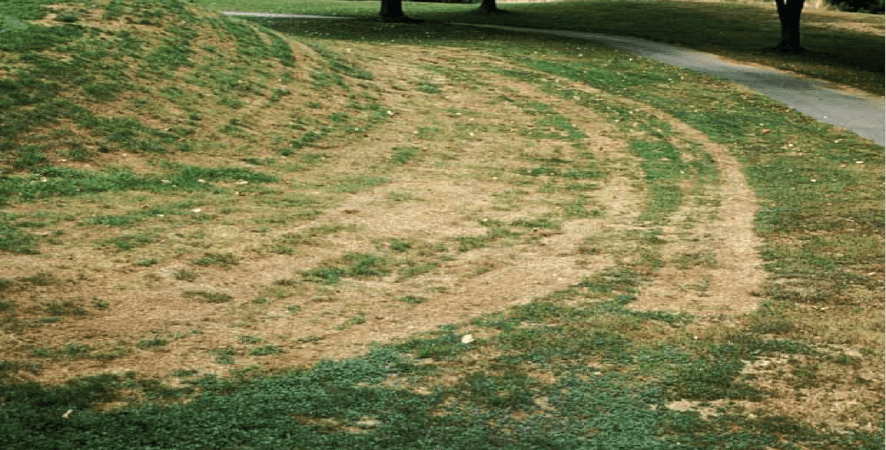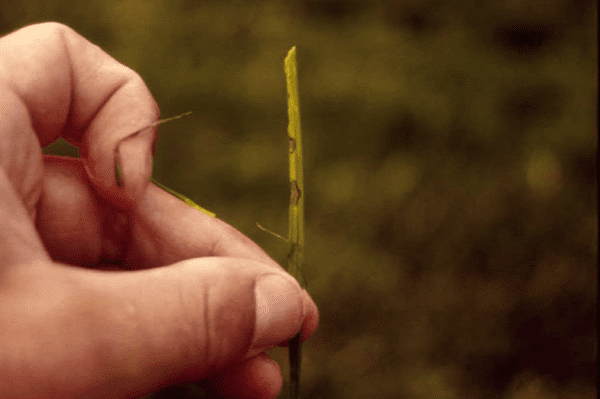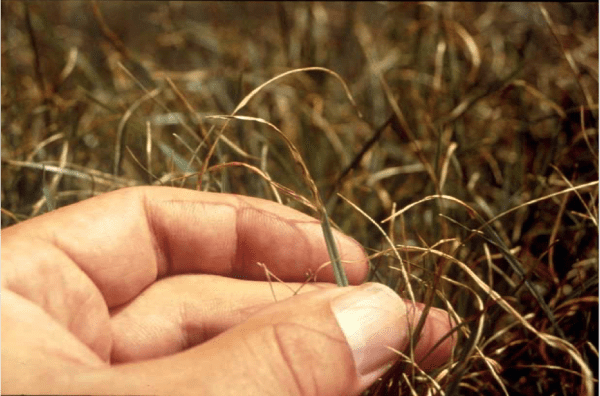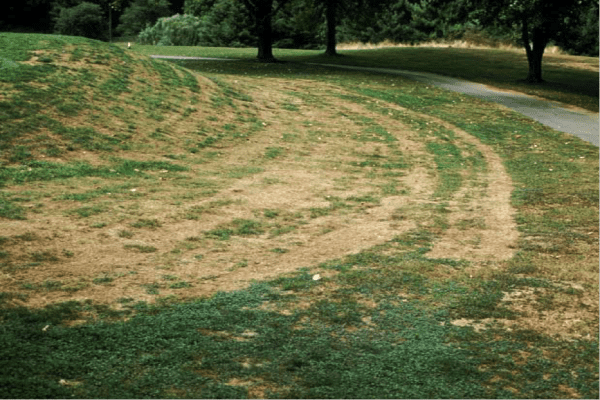Beware of Gray Leaf Spot

I have been in the Turf Industry most of my life. The most common disease that I run up against is dollar spot followed by brown patch. Over the past fifteen years, I have heard about the incidence of gray leaf spot, but in my world, it has not been a disease that has been much of a concern. However, this changed dramatically during this past season of 2018. Because of this, I felt compelled to write about it because I believe that everyone needs to beware of gray leaf spot.

Gray leaf spot is a fungal disease that attacks perennial ryegrass and tall fescue. The symptoms begin as tan or gray spots on the leaf and can progress to the crown area of the plant resulting in the death of the plant. The leaf spot phase of the disease is often very short-lived and can rapidly progress into tissue death resulting in the entire loss of a turf stand. Oftentimes where spots have coalesced enough to completely blight a leaf, the leaf will twist into a characteristic “fish hook” shape. Severely-infected leaves can also be covered with grayish conidia. Symptoms initially will resemble drought or heat stress.

General Conditions Favorable for Gray Leaf Spot:
- Air temperature that’s between 82 – 90 degrees Fahrenheit
- High humidity
- Extended hours of continued leaf wetness
Historically, this disease has occurred in the August-September timeframe, but if conditions are favorable, it can occur at any time. This disease can and does strike without warning, and it can decimate a turf stand in a matter of days.
One’s best defense is to be proactive when conditions are favorable for development.
Cultural Practices:
- Lower mowing heights
- Irrigate in the morning
- Avoid quick-release nitrogen applications
Preventive fungicide applications are best because it is very hard to diagnose gray leaf spot in a timely manner for curative fungicide applications to be effective. Other management options are to overseed with gray leaf spot resistant varieties or switch to Kentucky bluegrass or creeping bentgrass.

If you manage perennial ryegrass or tall fescue and have not encountered this disease, then I suggest that going forward, you beware of gray leaf spot!
Ginny Smith
Sales Representative







